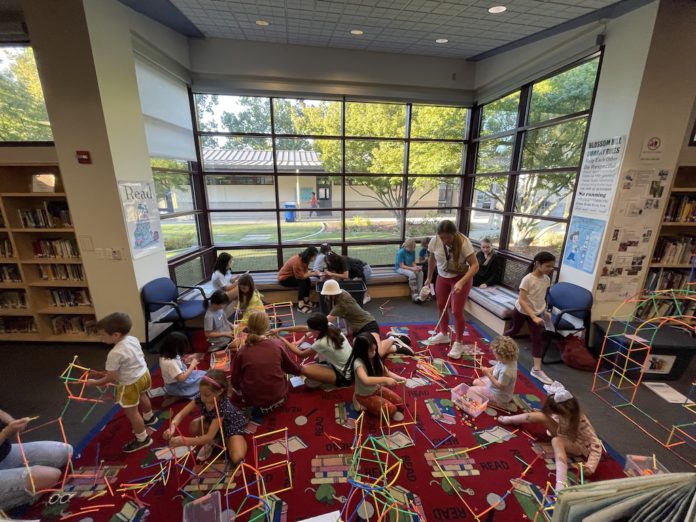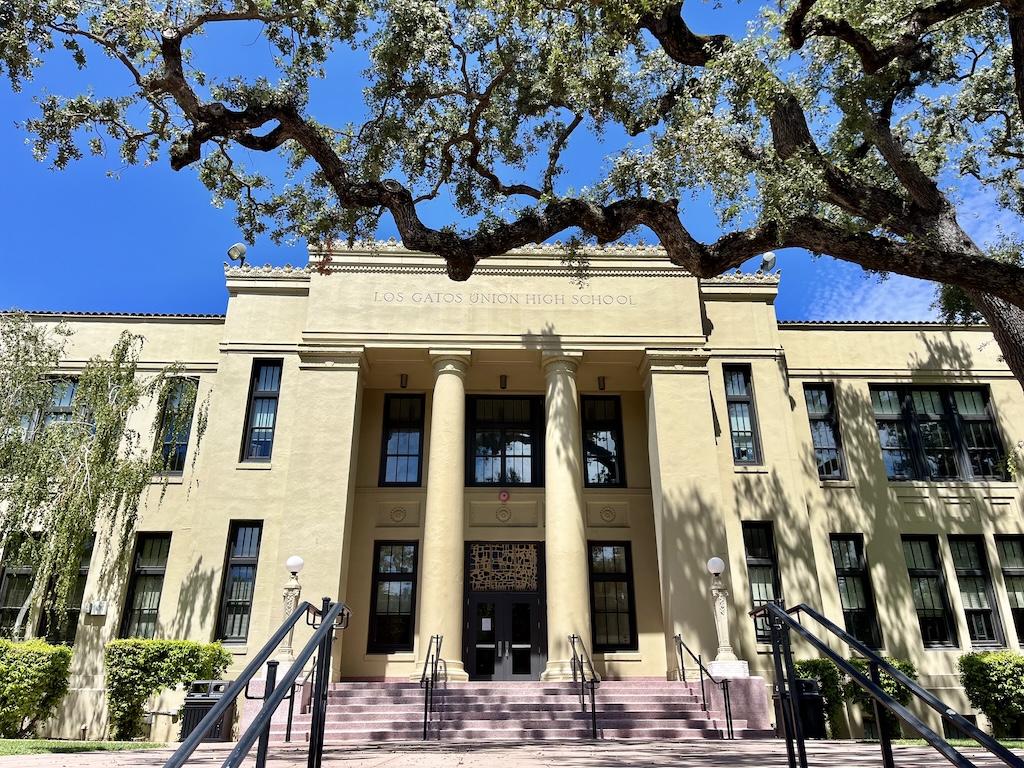
Los Gatos prides itself on providing outstanding public education to its young residents. Families flock to our town for this very promise—and for good reason. Serving over 2,000 local students, Los Gatos High School is consistently ranked within the top 100 schools in California and boasts overall test scores within the top 5% of schools in California. Our K-8 schools are equally coveted for their passionate teaching staff and strategic curriculum.
Maintaining Los Gatos’ prestigious academic reputation is not without its challenges. Due to education funding formulas, which in many ways prioritize funding on a need basis, Los Gatos’ two public districts—K-8 and the high schools system—have unique financial pictures. The Los Gatos Education Foundation notes, for example, the elementary district has less to spend per student than some peer districts. It was about $14,000 per pupil.
That rose to $16,444 in 2022-23. “Unfortunately, (when measured against) our comparable districts, we’re in the bottom half,” said Los Gatos Union School District Superintendent Paul Johnson. However, Los Gatos’ funding is far from the worst: over recent years, some Santa Cruz County institutions were getting about $10,000 per pupil—or less. Last year, Scotts Valley Unified School District reached $11,045 a student, according to Roger Snyder, one of its trustees. Johnson says some of the schools on that side of the hill get additional grants districts here don’t qualify for.
The problem is not just local. When compared to public schools across the nation, on a per-student basis, California receives much less government support than other places. California gets about half as much, per pupil, as New York schools.
But why? The answer to this question lies in Proposition 13, passed by California voters back in 1978. The legislation was pitched as a way to protect seniors and others from being forced from their homes by rising taxes, but had serious ramifications for public schools. By throttling the growth of property taxes, Prop 13 effectively slashed the financial lifeblood of public schools.

The reduction in property tax revenues forced the responsibility of school funding to shift from local governments to the state, leading to the Local Control Funding Formula (LCFF)’s creation in 2013. The LCFF distributes funds to schools in need, including by providing instructional materials and supplies like textbooks and technology. However, California’s budget is subject to economic fluctuations, resulting in inconsistent distribution, especially during economic downturns.
“Nonessential” programs have borne the brunt of the hit. Classroom budgets for supplies, art classes, music classes, school nurses and classroom aides have been drastically reduced. The only thing preventing them from disappearing entirely? Motivated communities.
In Los Gatos specifically, foundations like the Los Gatos Education Foundation (LGEF), which supports our local K-8 schools, and the Wildcat Foundation, which supports LGHS, have risen to the challenge. Through community donations and local initiatives, these foundations have helped ensure that every local student has access to the education they deserve.
“LGEF was started to raise money from the parents and the community to support the district with those ‘nice to have’ type activities,” Jessica Johnson, president of LGEF, told the Los Gatan.
But when you examine the programs and activities funded by LGEF and One Community—the umbrella organization that also includes local “home and school” clubs, the school district and the broader community—“nice to have” no longer feels accurate; “essential” is more fitting.

State funding “will ensure the kids know how to read and write, but who’s going to make sure they have music and they have art? That they’re exposed to technology and exposed to the library and all of the things that really enrich an education?” asked Sonja Tappan, executive director of LGEF.
LGEF strives to be the answer. Their funding goes toward art teachers, PE teachers and specialists, Spanish teachers, librarians, dance programs, theater programs, culture classes, mental health counselors and more.
One of their most popular initiatives is STEAM Nights, an event that takes place at each elementary school around the beginning of the school year. Parents and families of the community are invited on campus to engage in hands-on STEAM projects led by Fisher Middle School volunteers. These events not only provide fun for students but also foster relationship-building among parents, teachers and staff, strengthening the sense of community in Los Gatos.
Catering to the high school district, the Wildcat Foundation has also made a big impact on the lives of local students.
“We have really good schools but we want great schools. We try to impact every classroom and benefit every student,” said Selin Gurses Acar, president of the Wildcat Foundation.
Like the K-8 foundations, the Wildcat Foundation helps boost academics, technology, electives, wellness, and community at LGHS. In the past two years, they’ve provided LGHS with over $1 million in donations.
One notable success story from the Wildcat Foundation is the funding and maintenance of the weight room at LGHS, which has benefited high school athletes and PE students alike. Without the foundation’s support, extracurricular opportunities like the weight room would not have been possible, leaving students at a disadvantage compared to their peers in better-funded districts.
The strength of these foundations lies not in their mission, but in the community’s unwavering support. According to Johnson, One Community raised over $2.4 million last year, with over 61% of families contributing.
In addition to parents, many Los Gatos business owners have chosen to contribute to LGEF and the Wildcat Foundation as a way of giving back to the community that supports them.
“To support these programs that are underfunded… it’s a responsibility,” said Ducky Grabill of Real Estate Sereno, during an interview with the Los Gatan on Saturday. Grabill and her partner agent Amy Hoefer are longtime “gold” donors of LGEF and the Wildcat Foundation. “Education is the answer to people bettering themselves and strengthening their community bonds.”
Grabill’s children all went through the Los Gatos public schools. Now, three of her grandkids are following in their footsteps. But her connection to the cause doesn’t stop there.
“My son-in-law is a teacher in the LG school system,” Grabill said. “My other daughter…is legal counsel for (an educational nonprofit) that supports teachers. From all my conversations with both of these educators, they’re constantly reminding me of how schools are underfunded and how much they rely on (programs like these).”
But Grabill’s donations are driven by more than just her personal connection to the cause. She stresses that the intersection between our local schools and businesses is more significant than many might realize.
‘We believe our mision has never been more critical’
—Selin Gurses Acar, president of the Wildcat Foundation.
“By supporting those programs, I’m hoping to maintain home values, and as a realtor that’s important,” she says. By donating to LGEF, both Grabill’s business and local students have a chance to benefit.
Tappan spoke of a similar phenomenon.
“(These students) are going to be our next citizens. They are the people that are going to be working in these businesses, they’re going to be working in real estate and selling homes or buying homes, so it’s all very interconnected…Everybody should be invested, because every child that grows up here is an ambassador for (Los Gatos).”
Contributions to LGEF and the Wildcat Foundation have a ripple effect, providing both financial support and a sense of unity within the community. This collective effort has helped Los Gatos schools maintain a high standard of education in the face of underfunding.
Despite the success of LGEF and the support from local businesses, challenges remain. The ongoing struggle to secure adequate funding is a constant concern, particularly as economic uncertainties and changes in state funding policies threaten to impact the level of community support that schools can rely on. Additionally, there is the ever-present risk of donor fatigue, as the community is continually called upon to fill the gaps left by insufficient state funding.
But education advocates see good news, too. Measure A, the parcel tax recently passed in May, kicks in for the first time this school year. It’s anticipated to provide the 9-12 school district with $2.52 million annually. In November, Measure CC will be on the ballot, and voters will be asked to support a facilities bond for the K-8 district. Both Johnson and Tappan are encouraging parents to vote “Yes.”
While our local districts benefit from increased funding when property property values rise, both LGEF and the Wildcat Foundation stress the importance of ongoing donations from parents and local businesses, regardless of whether they have children in the district or not.
“Please donate,” said Gurses Acar. “We believe our mission has never been more critical.”
*With files from Drew Penner









